
|
|
|
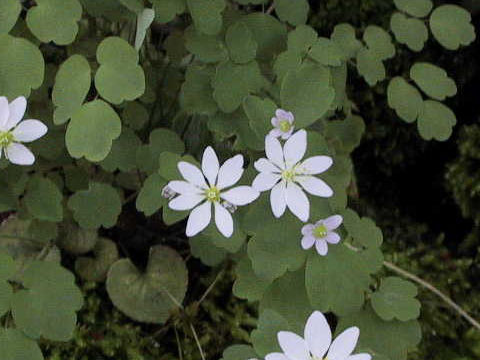 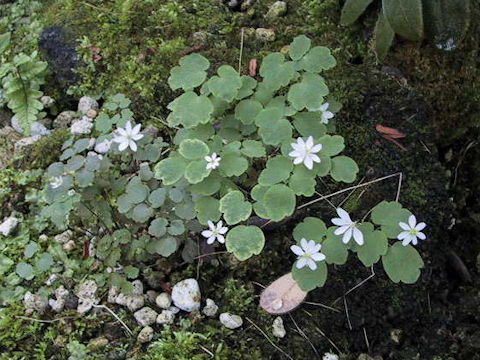 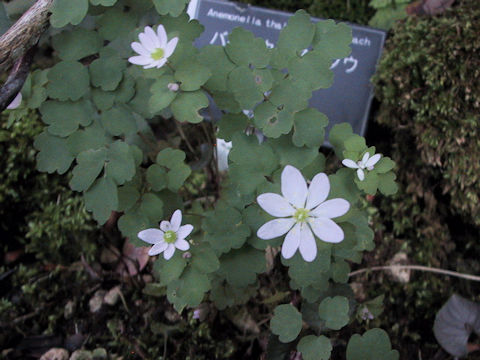 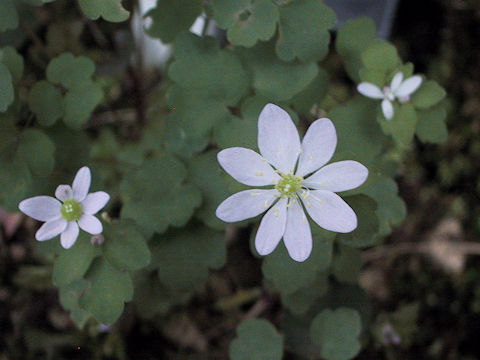 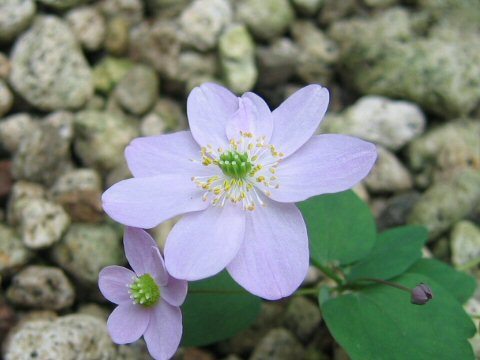 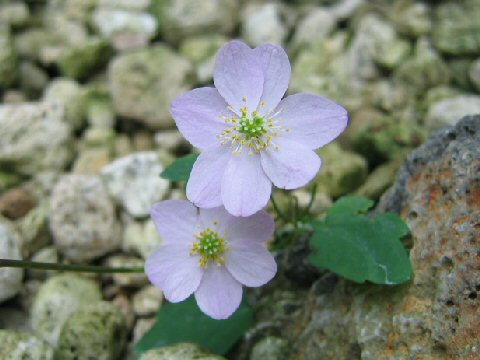 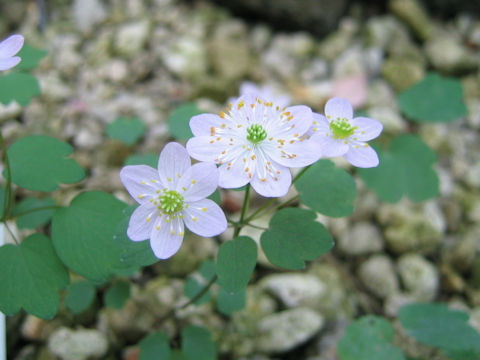 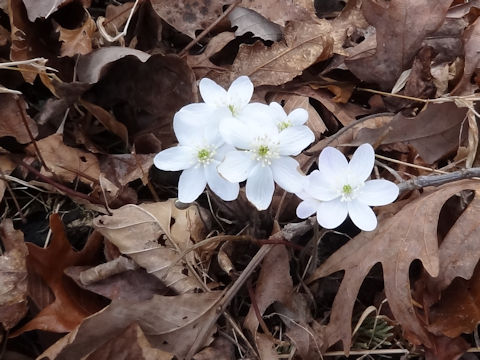 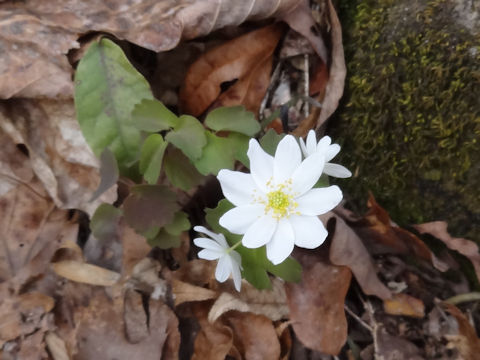 |
|
|
|
北アメリカの東部が原産です。森林地帯には生え、高さは10〜30センチになります。根生葉には、長さ10〜30センチの葉柄と2回3出複葉の葉身があります。小葉は広円形で、先端は3裂します。4月から5月ごろ、花は1個または3〜6個が散形状に咲きます。花は白色で、5〜10個(ふつうは6個)の花弁状の萼片があり、黄緑色の雄しべが多数つきます。この植物は夏に休眠します。 |
|
|
キンポウゲ科バイカカラマツ属の多年草で、学名は Anemonella thalictroides (syn. Thalictrum thalictroides)。英名は Rue anemone。 |
|
|
The Rue anemone (Anemonella thalictroides) belongs to Ranunculaceae (the Buttercup family). It is a perennial herb that is native to eastern North America. This herb grows in woodlands and up to a height of 10-30 cm. The basal leaves have petioles 10-30 cm long and leaf blades that are two times ternately compound. The leaflets are widely rounded in shape and the ends are three lobed. The flowers bloom singularly, or in umbel-like inflorescences with 3 to 6 flowers, from April to May. They have white, 5-10 petal-like sepals (usually 5) and numerous greenish-yellow stamens. The plant becomes dormant in summer. |
|
|
[上・中1] 大阪市鶴見区「咲くやこの花館」にて、2002年02月24日撮影。 [中2・中3] 同上にて、2003年02月14日撮影。 [中4・中5] 同上にて、2004年09月16日撮影。 [中6] 同上にて、2004年10月13日撮影。 [中7] アメリカ・ケンタッキー州「マンモスケーブ国立公園」にて、2014年03月31日撮影。(photo by Jon Suehiro) [下] 同上にて、2014年04月02日撮影。(photo by Jon Suehiro) |

|
|
Shu Suehiro |